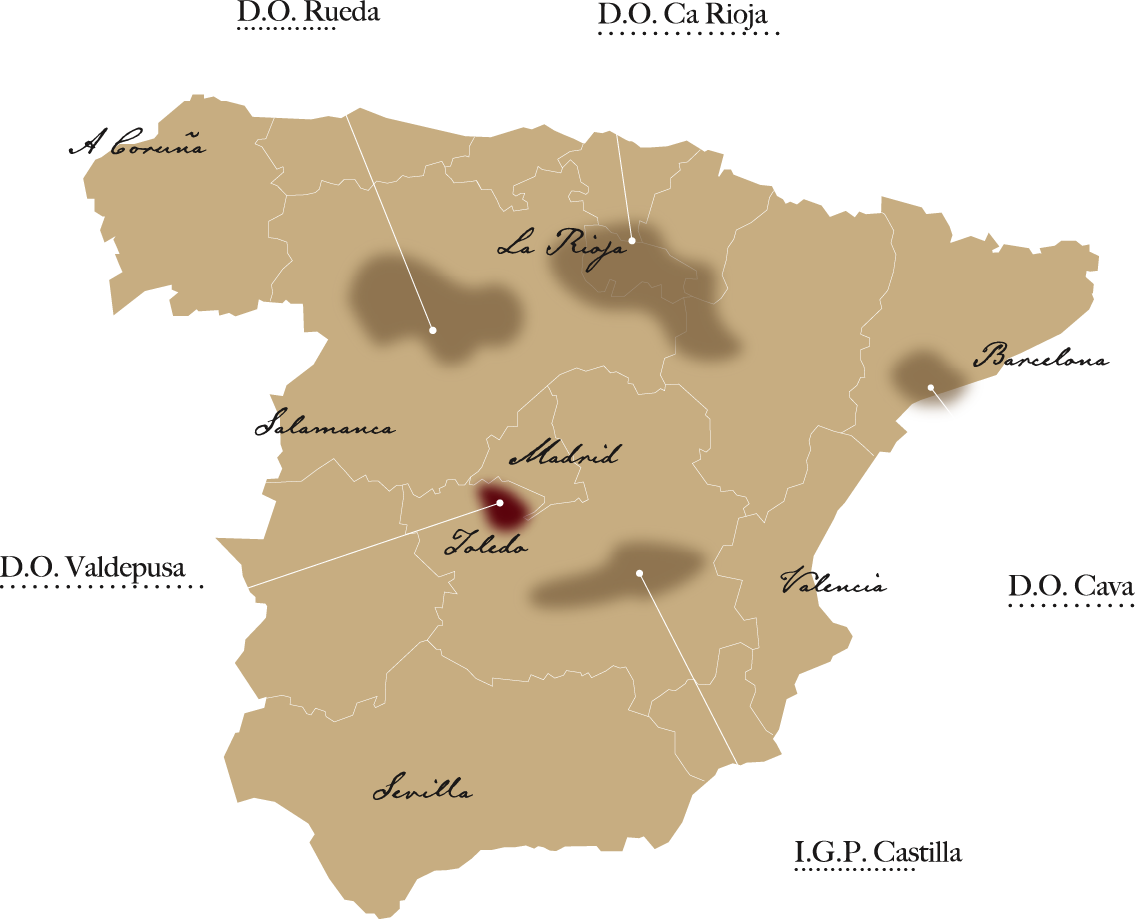


Dominio de Valdepusa stretches over 50 hectares, including the original Cabernet Sauvignon vineyard planted in 1974. From there, it has gradually expanded to include the Syrah, Petit Verdot and Graciano varieties. Large evergreen oaks mark the vineyard’s landscape and its paths are flanked by cypresses, rose bushes and rows of lavender. The main estate and the winery are historic buildings from the 18th century.
The central patio is a stunning example of classic Toledan architecture, housing a wine press where visitors can experience the traditional grape stomping system at harvest time.

The soil of Dominio de Valdepusa is made up of a superficial layer of clay with a thickness of 30 to 50 cm, resting on a subsoil of fragmented limestone stretching at least two metres deep. This base soil has an excellent structure, porosity and drainage, considered for centuries as the ideal conditions for producing great wines.
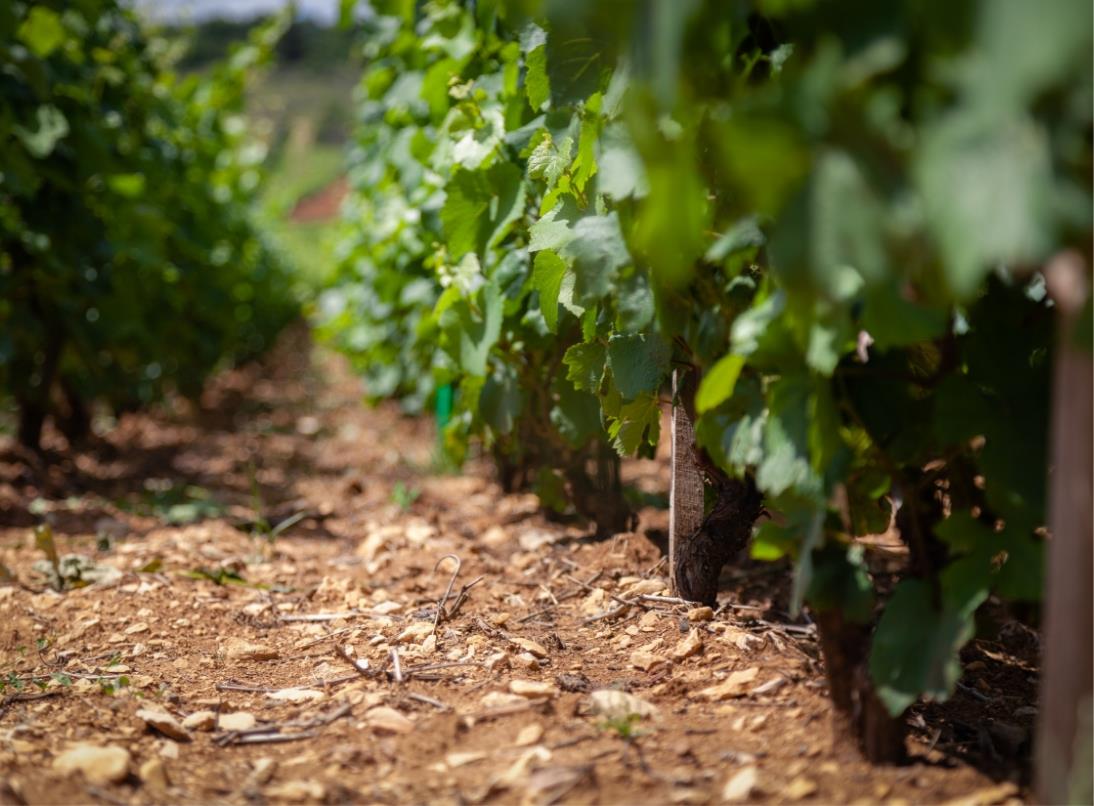

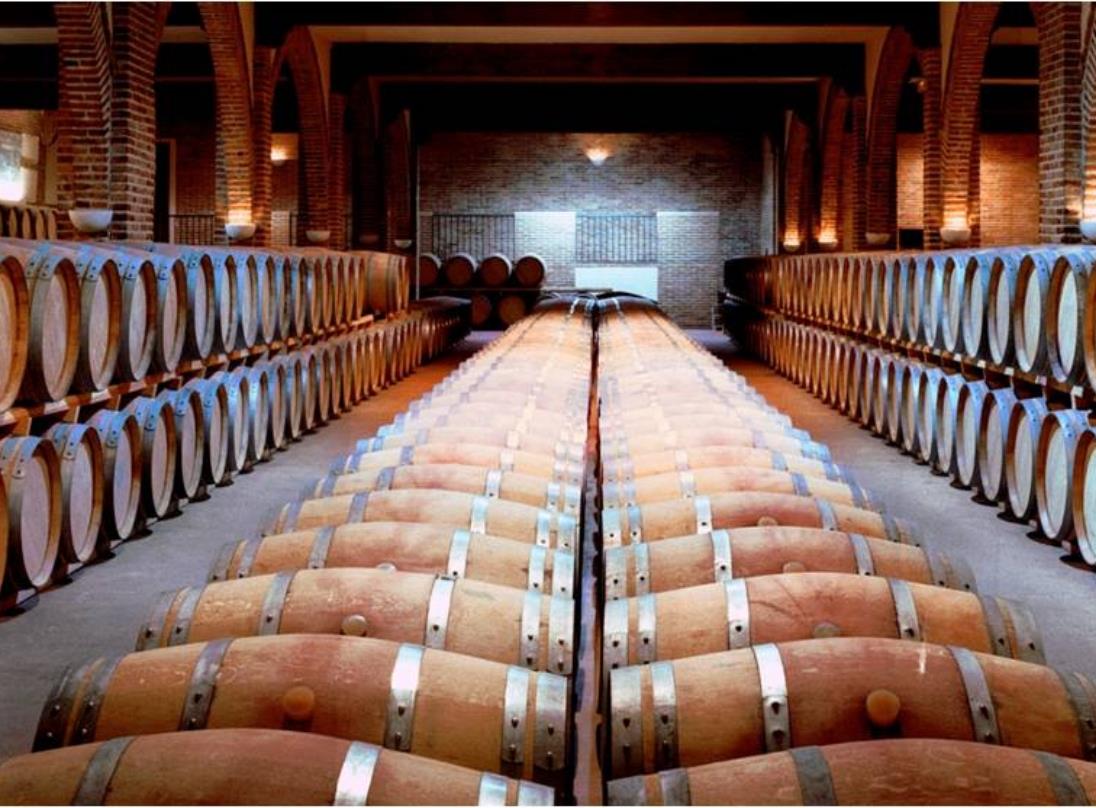
The ageing cellar is entirely underground, with a capacity for 2,000 Bordeaux barrels. Inside, there are three strict rules: It must always be clean, temperature controlled and no oxygen must enter any of the post-fermentation operations. Hygrometric control is available, keeping conditions ideal when elaborating the wines and ensuring products of consistently high quality.
Only French oak barrels from the Allier region are used and must be new or semi-new. We make an effort to minimise interventions by avoiding unnecessary transfers, filtering or clarifications.
Our Approach
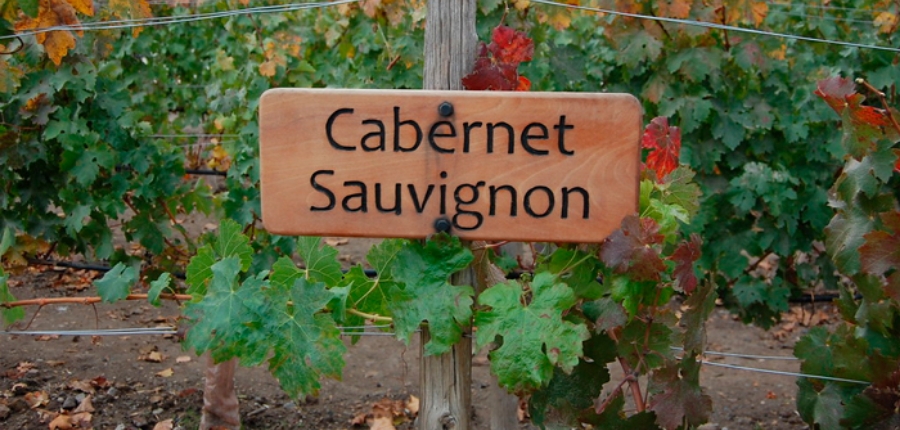
We plant the first Cabernet Sauvignon vineyard in Castilla La Mancha and become the first vineyard in the world to apply drip irrigation.
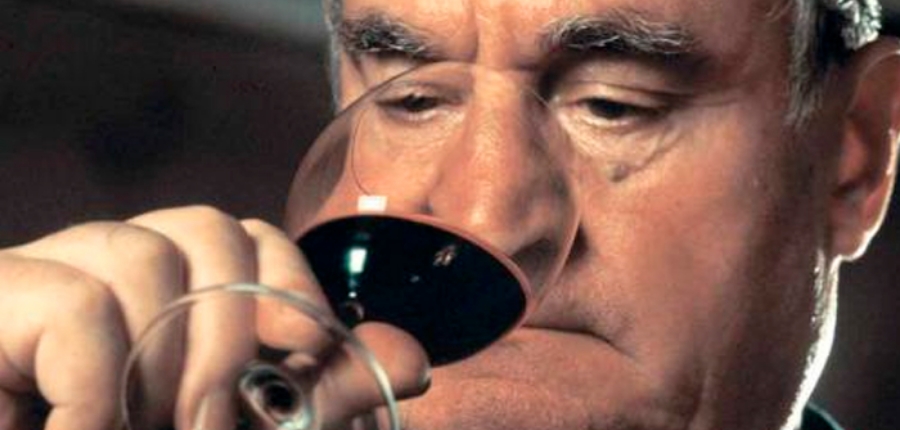
Advising services begin from Émile Peynaud, professor of oenology at the University of Bordeaux (France).
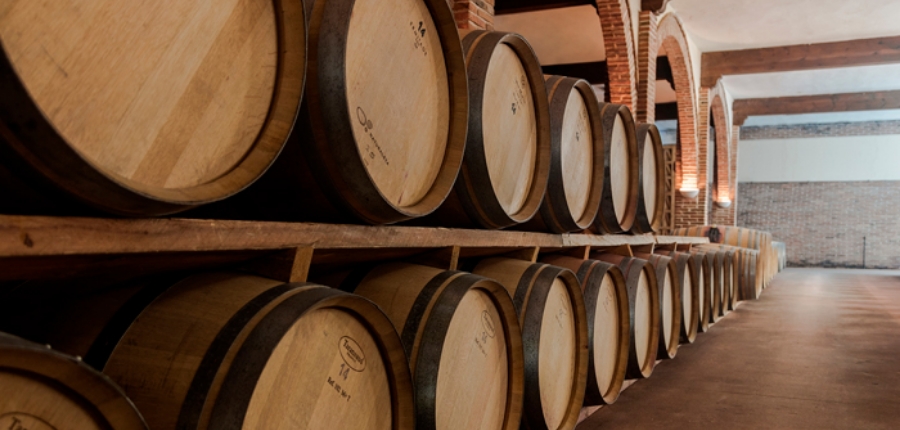
Construction ends of the new Dominio de Valdepusa winery, featuring the first climate-controlled ageing cellar in Spain.
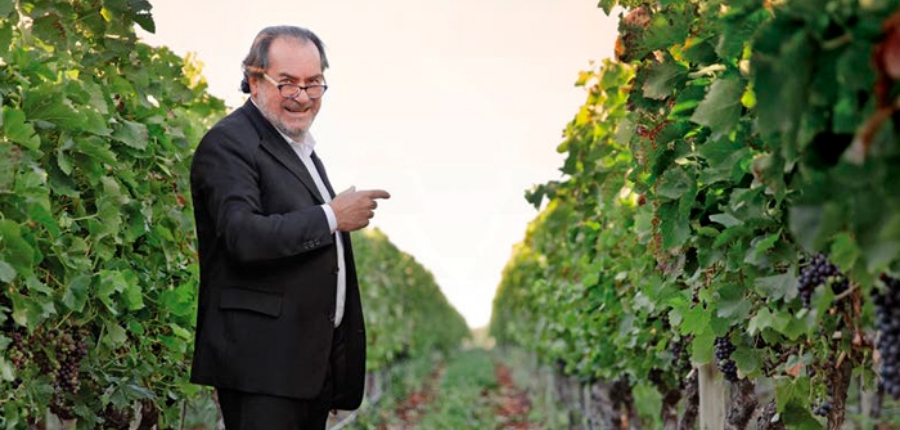
We plant the first Syrah variety in Spain.
Advising services begin from oenologist Michel Rolland (Bordeaux, France).
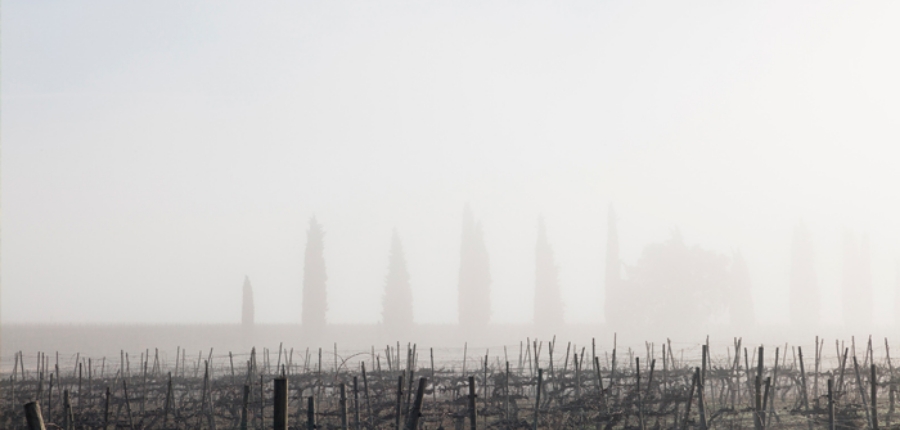
We plant the first Petit Verdot variety in Spain.
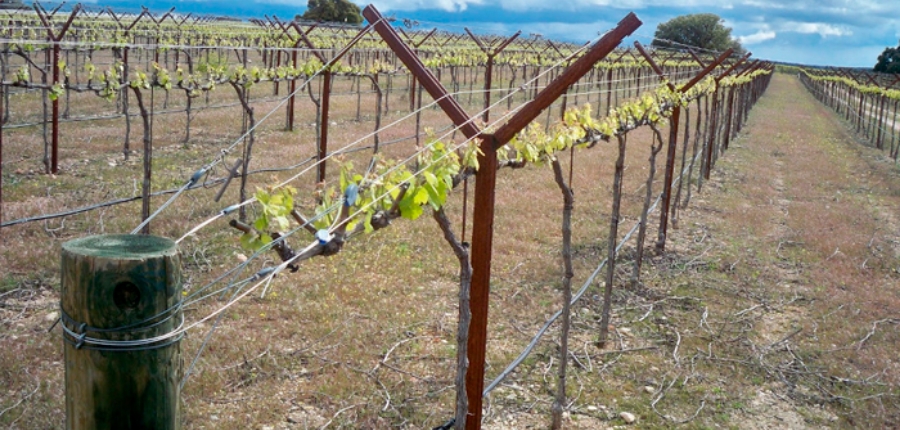
Trellis systems are introduced featuring the advanced Lira and Smart-Dyson designs.
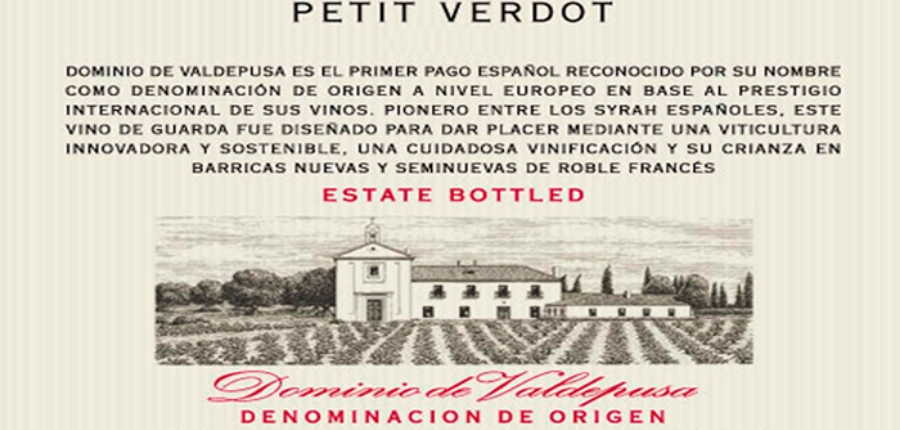
We launch the first single-varietal Petit Verdot in the world.
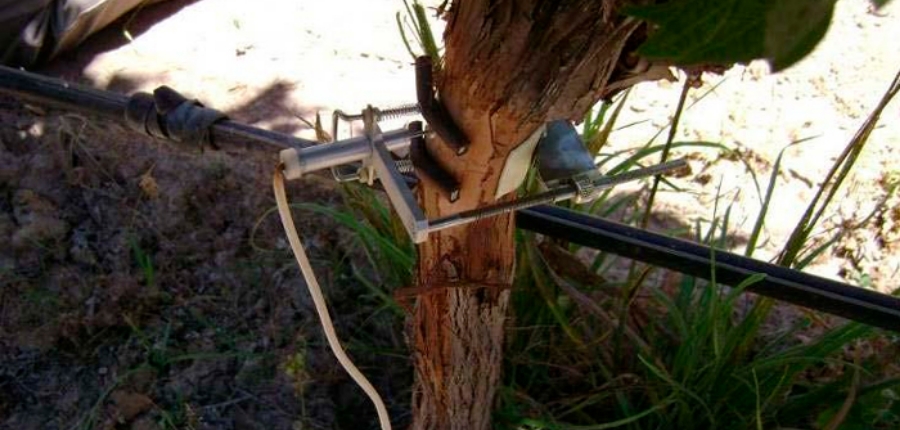
Computerised electronic controls are introduced to monitor soil moisture, along with dendrometers to measure the water stress of the vines.
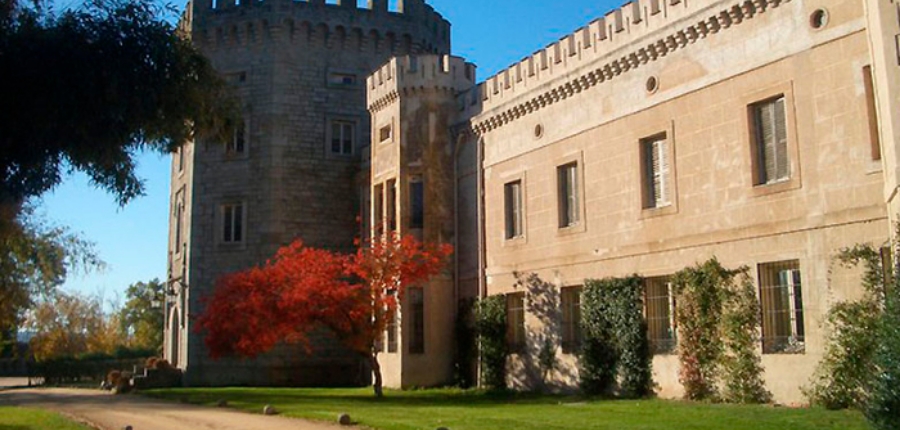
We launch the first vintage (1997) of the multivarietal Emeritvs.
Experimental planting begins of the Graciano variety.
The small estate vineyard El Rincón is planted in Aldea del Fresno (Madrid).

Dominio de Valdepusa is granted denominación de origen status by the Government of Castilla-La Mancha. This is later ratified by the Ministry of Agriculture and by the European Commission in 2003.
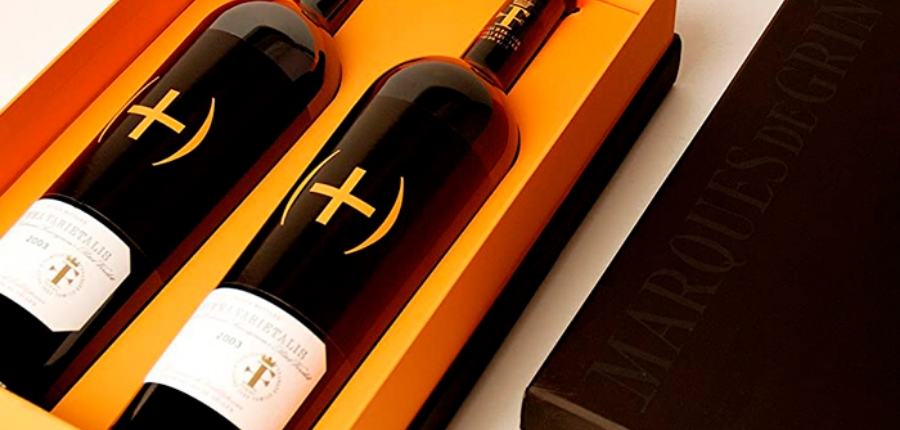
We launch the multivarietal Svmma Varietalis.
We launch the Marqués de Griñón extra-virgin olive oil.

Distribution is reorganised on a national level.
Distribution is reorganised on an international level (42 countries), including an agreement with the LVMH group in the United States.
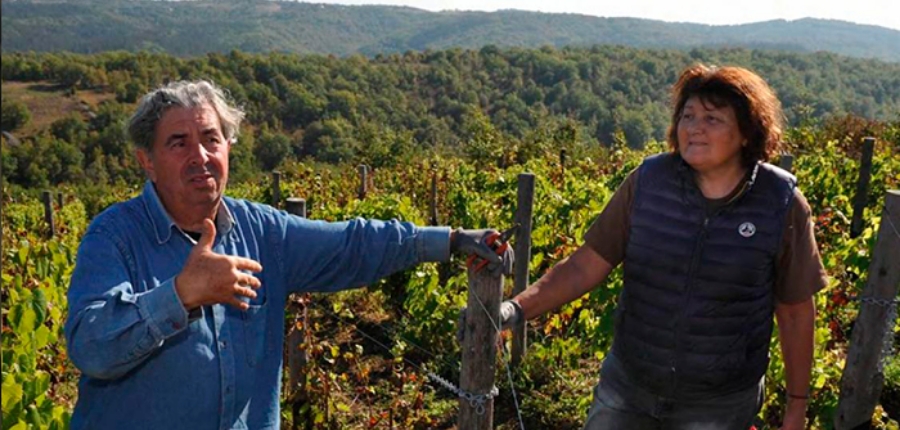
Advising services begin from Claude Bourguignon, professor and international soil guru. Measurements and observations begin of the root systems of the Dominio de Valdepusa vineyards.
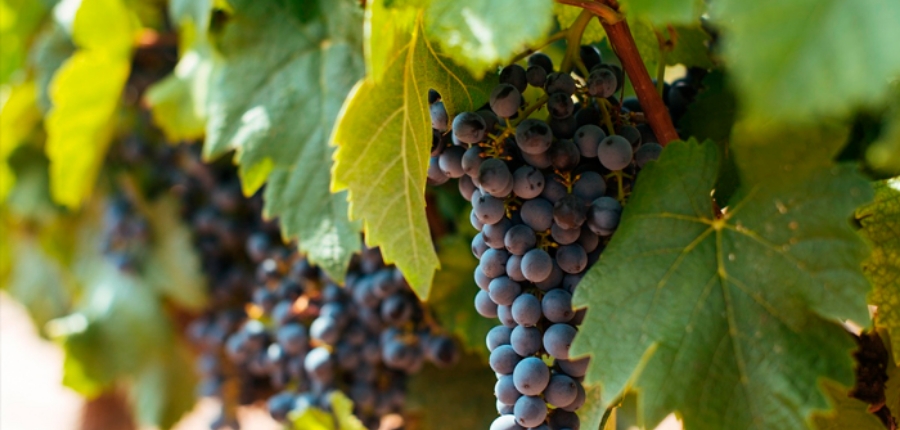
Due to the excellent results of the experimental planting, the vineyards of the Graciano variety are expanded at Dominio de Valdepusa.
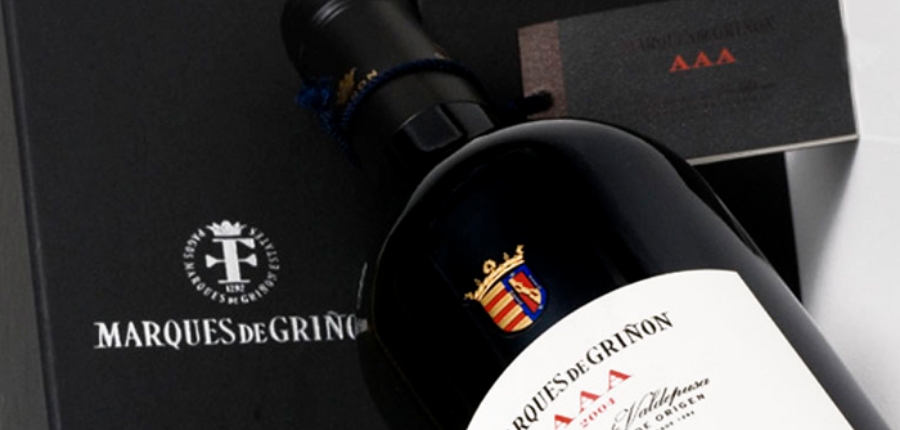
We launch Marqués de Griñón’s most iconic wine, AAA. This wine is produced in very small quantities and features only the most exceptional batches in years that deserve it.